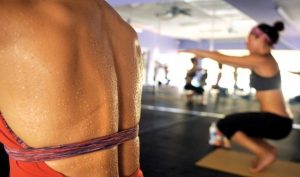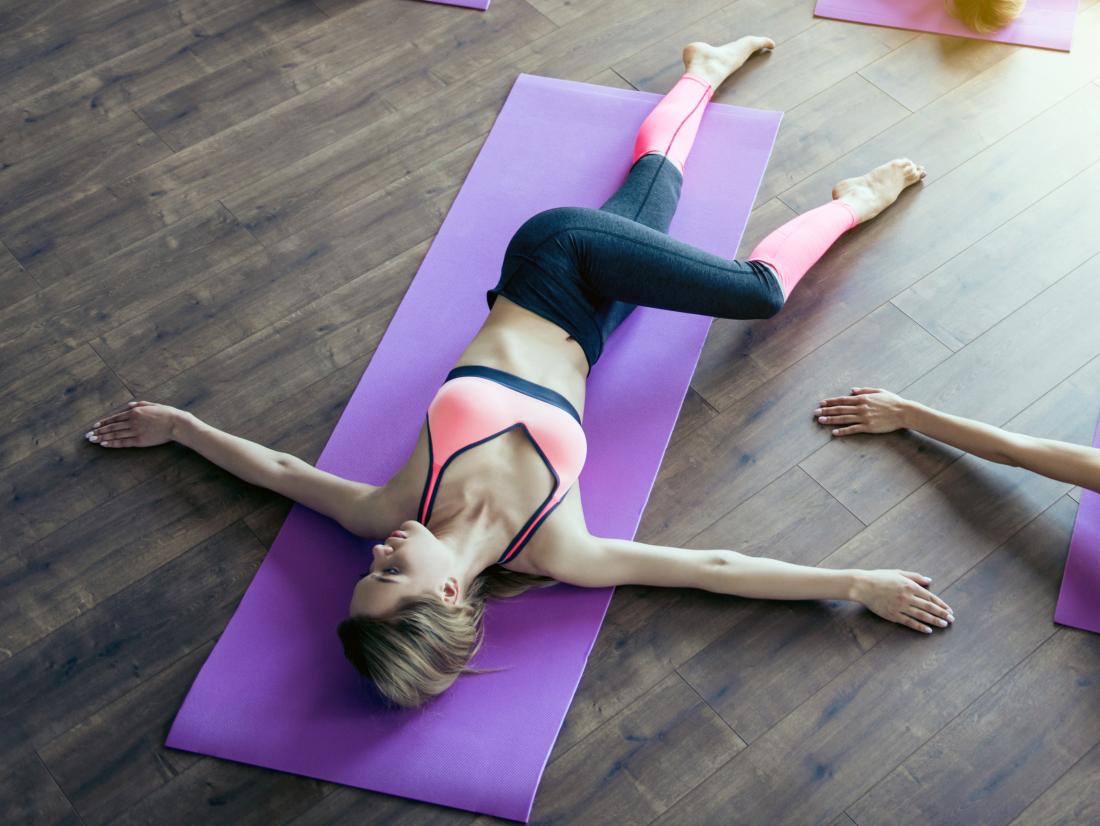
Vinyasa Yoga, a popular form exercise, is also well-known because of its profound effects on the brain. These poses require intense concentration and attention to detail. To achieve flow, which is a complete awareness of the moment, the focus must be on the breath and body. This is the goal: to achieve a state of mindfulness as quickly as possible, and to keep it going for as long as you can. This type of yoga is a great option for busy people.
Deep breathing is required to achieve the poses. This type of breathing is essential for dealing with stress, and pushing through physical obstacles. Long inhales and exhales through your nose during yoga classes signal to the brain that your body is in control. The brain also receives this signal to direct its attention to the heart center, an important part in yoga practice. It also prevents injuries.
Vinyasa-yoga classes generally last for around an hour, but there is no set time. But, there are others that go on for longer. Some are just as short as 30 minutes. You should be able to determine the duration of the class by calling the studio in advance. The sequence will have a variety poses, as the name suggests. You can choose a vinyasa-yoga class that is suitable for you, depending on how intense.

If you are new to vinyasa yoga, you might be intimidated by the class. All classes are different. Each class usually starts with breathing exercises and ends with a restorative pose called Savasana. This is designed to ground you in the moment, and to reconnect you with your breathing. The majority of classes begin with a few warm up poses, such as the Cat Cow pose or Downward Fassdog. It is important to get a variety of experience with instructors before you commit.
Vinyasa yoga is a continuous movement between different poses. While it's a fast-paced style of yoga, it is still a meditative practice. This type of yoga is notable for its constant movement between poses. It helps to strengthen the mind-body connection. The breath can be used to focus on the poses, without you having to hold your breath or breathe rapidly.
Vinyasa is a form that improves your flexibility and posture. But it's also a great exercise to build core strength. This is the best form of exercise for beginners. It improves balance, core strength, range of motion, and coordination. It is recommended for those who aren’t familiar with stretching. They may require some guidance, but it’s important to start with something you can do every day.
It is important to consider your strength and flexibility when choosing a vinyasa classes. A beginner's class is easier than an advanced. The beginner's class will offer you the same benefits. Vinyasa will increase flexibility and strength as well as physical fitness and mental health. You'll be able to focus on your breath throughout the entire class.

Vinyasa Yoga is a form that emphasizes meditative movement. It will help you become more mindful of the present moment, as well as your surroundings. It is vital to maintain a focus on your breathing and mental agility as you practice Vinyasa. Vinyasa is a way to improve physical agility and mental stamina. Your practice will improve over time as you practice it.
Vinyasayoga has many benefits, including meditative ones. It improves physical and psychological health. It can help you reduce stress and improve your mood. Vinyasa is a form of yoga that combines postures with yin postures. When done properly, it's like a moving meditation. You will feel more vibrant, alive, and relaxed.
FAQ
Do I have to exercise while drinking alcohol?
Yes. Alcohol can increase energy expenditure and speed up recovery, as well as reduce soreness.
Also, alcohol increases insulin sensitivity which makes it easier to absorb glucose.
However, alcohol can cause dehydration, which can slow down your metabolism. Also, alcohol can reduce testosterone production, which may lead to lower muscle-building potential.
Women shouldn't consume alcohol before exercising. Women who drink heavily should wait at the least 24 hours before exercising.
Nursing mothers should abstain from alcohol as much as they can.
Men should limit their intake to one drink per day.
What is a good gym routine for you?
You must exercise regularly to stay fit. It doesn't matter what type of fitness activity you choose as long as you do it regularly. The key thing is consistency. If you want to achieve results, you must stick at it for an extended period.
Begin small daily activities like walking. Gradually increase your exercise time until you are able to spend 30 minutes per day. You could do this by running, swimming, weight training or yoga.
Try to make sure you exercise on all days of the week. Don't miss any sessions unless you have an excuse.
Wear appropriate clothing and footwear when exercising outdoors. Weather conditions can also affect your ability and safety to exercise.
When exercising, ensure you drink lots of water. Avoid drinking alcohol during this time because it can cause dehydration. Also, avoid caffeinated drinks such as coffee, tea, and cola. These drinks may give you energy but also dehydrate your body.
At first, it's normal to feel tired after you finish your exercise routine. However, if you continue with your program, you'll soon feel more energetic and refreshed.
How many calories should you consume each day?
This varies from person to person. The average is 2000 - 2500 calories per day. It is important to consider your lifestyle and determine how many calories you'll need.
What is the best workout routine to build muscle?
When you are building muscle mass, there are two main exercises you need to do. These include isolation exercises and compound movements. Isolation exercises target particular muscles, while compound movements focus more on several groups at once.
It is important to do exercises that work all of your major muscles groups. This ensures that you are always working hard during each session.
MyFitnessPal is an app that allows you to track your activities. You can log everything, from calories burned to weight lifting. You can even create customized meal plans that are based on your goals.
Is it true that kidney stones can be caused by overeating protein?
Protein helps maintain healthy bone and tissue. But consuming too much protein can lead to calcium excretion through urine. In turn, this can result in kidney stones.
It is important to keep in mind that not everyone will develop kidney stones if they consume more protein than 2 grams per kilogram (2.2lbs). You don't have to eat a lot of protein to get kidney stones.
You can prevent kidney stones by watching your sodium consumption. Sodium helps regulate water balance in the kidneys. Too much sodium results in a higher risk of developing kidney stones.
You can also reduce your intake of proteins if you develop kidney stones. Protein provides about half of the daily caloric needs for most adults. A reduction in protein intake will likely result in weight loss.
If you do decide to eat more protein, don't go overboard. Limit your intake to 20% of your total daily protein intake.
Statistics
- Get free shipping and 25% off today. (healthline.com)
- Are You One of the 20% of Guys (mh.co.za)
- The PRS enabled risk stratification for overall prostate cancer and lethal disease with a four-fold difference between men in the highest and lowest quartiles (HR, 4.32; 95% confidence interval [CI], 3.16-5.89). (pubmed.ncbi.nlm.nih.gov)
- According to the American Heart Association, blood pressure should be checked at least once every two years, beginning at age 20. (my.clevelandclinic.org)
- 10 pounds in a month is likely during a lean bulking phase, especially for beginners. (muscleandstrength.com)
External Links
How To
How do I lose weight while working out?
Exercise burns calories by increasing metabolism and oxygen consumption.
You'll lose weight safely if you exercise at moderate intensity.
These are some tips to help you lose fat while working out:
-
Do cardio exercises such as walking, swimming, jogging, cycling, running, or elliptical training.
-
Exercise for 30 minutes three times per week.
-
Strength training is a great way to lose weight.
-
Avoid intense training. You can build muscle without breaking down muscle tissue.
-
Drink plenty of water during exercise. Water flushes out toxins, and keeps your body properly hydrated.
-
After working out, drink low-fat protein shakes. Protein shakes are great for your muscles and energy.
-
Take smaller meals throughout each day to avoid feeling hungry.
-
Don't skip breakfast! You can feel tired and slow if you skip breakfast.
-
Take care of your mental health. Stressful situations can slow down metabolism.
-
Keep a positive attitude. Studies show that people who believe they're overweight gain more weight than those who think they look pleasing.
-
Get enough sleep. You will have a harder time losing weight if you do not get enough sleep.
-
Stay active. Be sure to get up and move around every hour or two.
-
Maintain a healthy diet. Eat right to feel satisfied and full for longer.
-
Find ways to relax. Relaxing doesn't mean your body releases stress hormones which cause muscle tissue to be destroyed.
A balanced diet contains all necessary nutrients for growth and development.
Consider eating six small meals daily instead of three big ones. This gives your body the time it needs to process what you've eat.
To maintain strong bones, you need to consume 500 mg of calcium each day. Calcium is found in dairy products like yogurt, fortified milk beverages, orange juices, cereals and bread.
Calcium comes from leafy green vegetables, beans, tofu, nuts, seeds, and cheese.
Vitamin D is required for calcium absorption. Vitamin D is found in eggs yolk, fatty fish and fortified foods.
Vitamin E is essential for skin health. It can be found as a vegetable oil, wheat germ, peanuts or almonds.
Zinc is essential for healthy immunity and wound healing. Zinc is found in oysters, legumes, meats, whole grains, and seafood.
Zinc deficiency can cause fatigue, loss of appetite, depression, and impaired immunity.
Consuming too much sugar can cause insulin resistance. This causes an increase in blood glucose levels. Insulin resistance leads directly to weight gain.
Insulin resistance occurs when the bloodstream is full of free radicals. Free radicals are molecules that have unpaired electrons, which can cause damage to cell membranes or other parts of your body.
Food additives, pesticides and herbicides, as well as preservatives, smoking and radiation are all sources of free radicals.
Free radicals can lead to cancer and heart disease, diabetes mellitus, arthritis, asthma, and premature aging.
The best way to avoid free radicals is to eat a balanced diet high in antioxidants. Antioxidants protect against oxidative damage.
Vitamin C is found in citrus fruits and beta carotene is found in carrots.
Additional antioxidant nutrients include selenium and copper, manganese and zinc.
Selenium is known to protect cells from the oxidative damage that free radicals can cause. Selenium can be found in Brazil nuts and liver, kidneys, liver, kidneys, shrimp, cod, turkey and lamb as well as chicken.
Copper protects the eyes, brain, lungs, liver, and red blood cells. Copper is found in shellfishes, poultry, meat, organ meats, and other foods.
Manganese forms an essential part of bone structure. Manganese can be found in brown rice and spinach as well as bananas, prunes raisins, oatmeal, lentils, and oatmeal.
Zinc helps with normal growth, reproduction, as well as wound healing. Zn is found in lean meats, poultry, white fish and eggs.